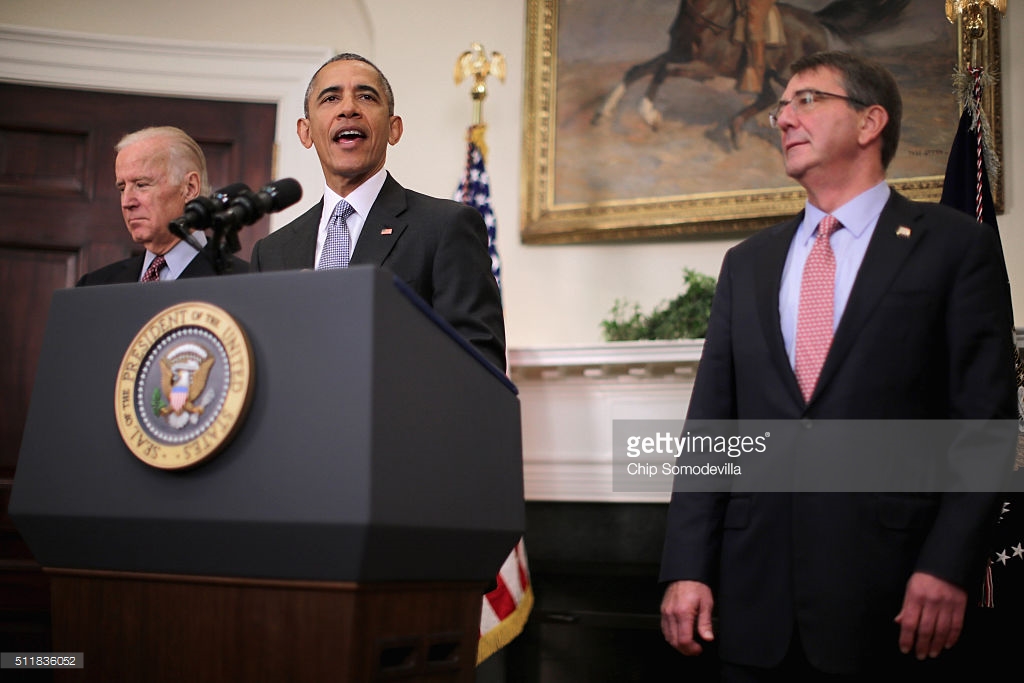
By NAN Staff Writer
News Americas, WASHINGTON, D.C., Weds. Feb. 24, 2016: As Republican lawmakers on Tuesday rushed to slam President Obama’s plan to close the detention facility at Naval Station Guantanamo Bay, (Gitmo), Cuba, focus turned to the remaining 91 detainees being held at the Caribbean prison.
The prisoners who remain on Cuban soil today are from more than a dozen countries, including 52 from Yemen. Some of the more prominent detainees include:
- Khalid Shaikh Mohammed
Pakistani citizen Khalid Shaikh Mohammed is perhaps the most notorious of all Guantanamo detainees. He was “the principal architect” of the Sept. 11, 2001 terror attacks, according to the 9/11 Commission Report, and was captured in his home country in March 2003. Mohammed has been at Guantanamo since 2006. After several months of detention there, he not only admitted organizing the 9/11 attacks, but also having a hand in the 1993 World Trade Center bombing, the murder of Wall Street Journal correspondent Daniel Pearl, and Richard Reid’s attempted shoebombing
- Abu Zubaydah
Abu Zubaydah, also born in Pakistan, issuspected of being an al-Qaida operative and 9/11 plot. His attempts to challenge his detention, and see his case move through the legal system, have been stalled for years. He has been held at Guantanamo since 2006.
- Ahmed Umar Abdullah al Hikimi
Yemen-born Ahmed Umar Abdullah al Hikimi is suspected of being a bodyguard for Osama bin Laden, and of fighting for the Taliban against U.S. forces in Afghanistan.
- Mohamedou Ould Slahi
Mohamedou Ould Slahi of Mauritania, has been held at Guantanamo since 2002. He has never been charged with a crime, although he has admitted loyalty to Al Qaeda in the early 1990s. He is famous for the publication of his memoir, “Guantanamo Diary,” based on his writings from prison, which was critically praised and became a bestseller. But he has never seen a copy of it.
- Ali Hamza al Bahlul
Ali Hamza al Bahlul, born in Yemen, is a former al-Qaida propaganda chief who arrived in Guantanamo on the day it opened in January 2002. He was found guilty of terrorism charges by a military panel at Guantanamo that sentenced him to life at the prison. But that conviction was overturned by a civilian court.
- Mohammed al-Qahtani
Saudi Arabia-born Mohammed al-Qahtani allegedly planned to participate in the 9/11 attacks as the so-called 20th hijacker, but was blocked from entering the United States. He was captured in Afghanistan and taken to Guantanamo when it opened in January 2002.
The U.S. Defense Department plan for the closure of Gitmo as submitted to the U.S. Congress calls for:
- A transfer to other countries of the 35 detainees out of the 91 who have already been approved for transfer;
- To accelerate the periodic reviews of remaining detainees to determine whether their continued detention is necessary;
- Continued use of all legal tools to deal with the remaining detainees still held under law of war detention; and
- To work with Congress to find a secure location in the United States to hold the remaining detainees.
President Obama on Tuesday insisted Gitmo, “undermines our standing in the world.”
Recurring costs at Guantanamo would be between $65 million and $85 million higher annually than at a U.S. facility, according to a statement from Pentagon spokesman Peter Cook.
Obama said closing Guantanamo could generate at least $335 million in net savings over 10 years and up to $1.7 billion in net savings over 20 years.
The United States currently does not pay Cuba anything to operate the Guantanamo Bay base. Cuba leased the location to the United States in 1903, but after Fidel Castro took power, the Communist government of Cuba accepted the annual $4,085 payment just once. Afterward, it began a multi-decade stalemate, cutting off water to the base and refusing to cash the rent checks.
Obama’s Gitmo closure plan comes ahead of his March 21st visit to Cuba.









